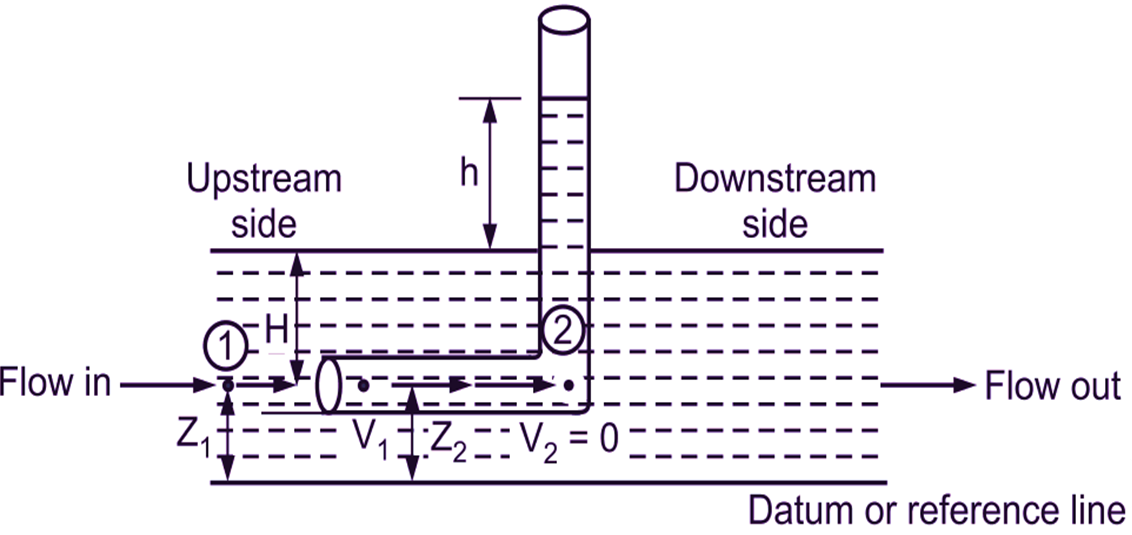Pitot tube is used to measure the velocity of fluid flowing through a pipe at any point.
Working principle of Pitot Tube
It works on the principle that, “if velocity of flow at a point becomes zero, there is an increase in pressure energy”. This point is known as stagnation point.
Construction of Pitot Tube
Pitot tube consists of a glass tube opened at both the ends. The lower end is bent through 90° and is placed such that, it faces the flow of liquid coming from upstream direction. The liquid enters into this lower end and then rises up vertically in the straight end of tube due to the conversion of kinetic energy into pressure energy. The velocity of liquid (V) is determined by measuring the rise of liquid in the tube.

Fig. 1: Pitot Tube
Flow rate of liquid can be determined by,
Q = A.V
Advantages of Pitot Tube
- No pressure loss.
- Economical to install.
- It can be easily removed from pipe line.
Disadvantages of Pitot Tube
- Poor accuracy.
- unsuitable for dirty or sticky fluids.
- Highly sensitive to upstream disturbances.